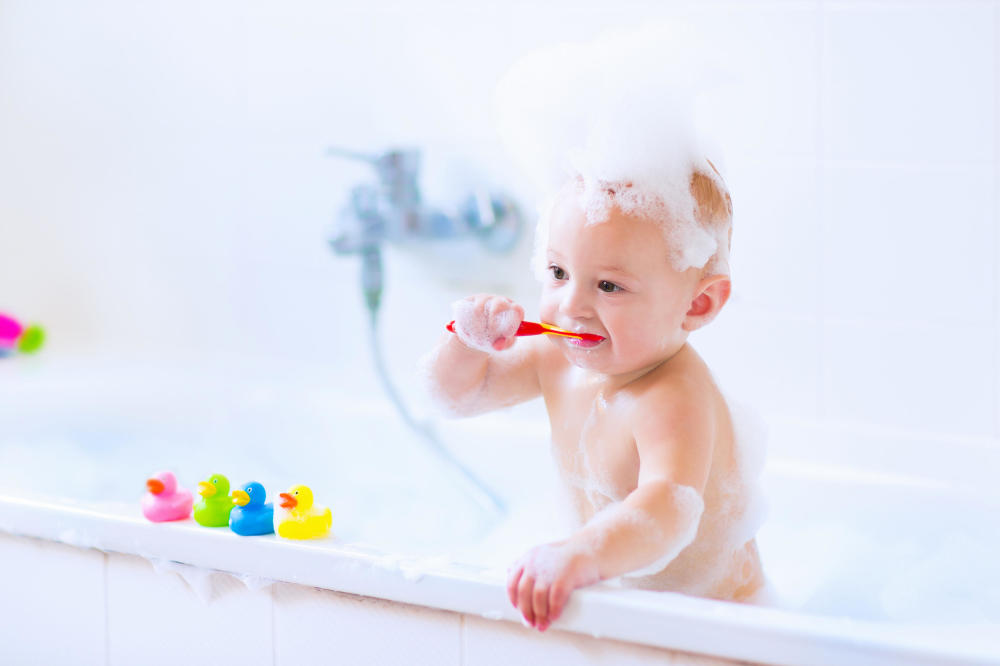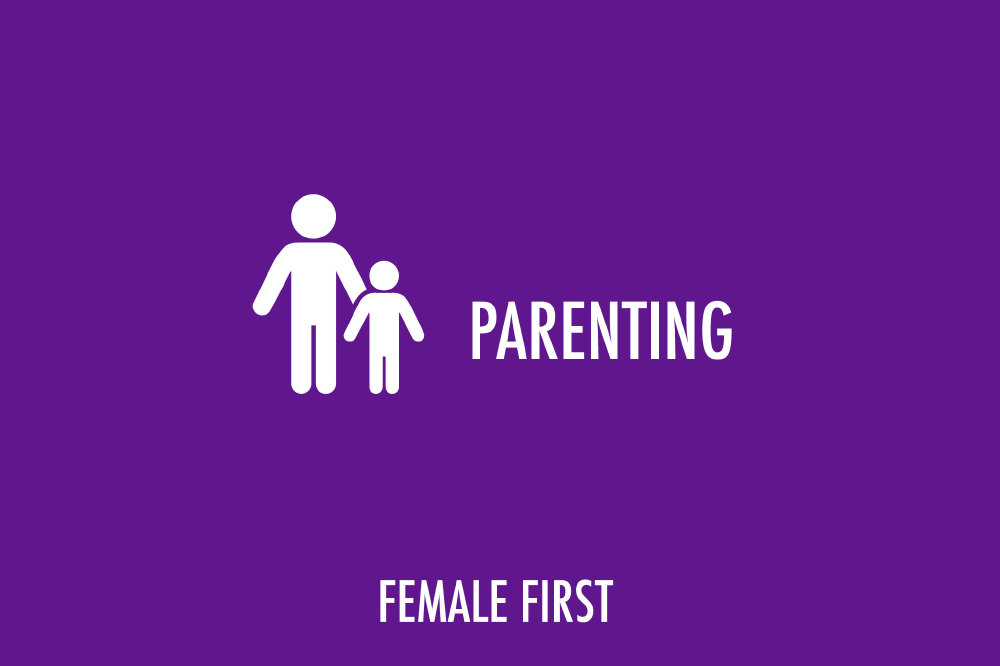Just when you thought teething was your biggest dental related problem- you realise that you have to brush the little pegs that come through too.

famveld / Alamy Stock Photo
When your little one is suffering from gum pain, it can be a challenge to get them to agree to put something in their mouth. With that said, almost 9 out of 10 hospital tooth extractions among children aged 0 to 5 years are due to preventable tooth decay, so it's important to start as soon as the first tooth comes through.
The sooner they get used to the sensation the better, so here are my top suggestions for keeping them calm while you brush.
Familiarity: A great place to start is getting them accustomed to the brush- let them hold it and play around with it in their mouth. As they bite down on the bristles, this will not only help to clean their mouth but also help with any pain they might have.
Distractions: Giving them a small toy or book can work wonders in keeping them distracted while you brush their teeth. It takes their mind off what is happening, especially if it’s one of their favourite things to play with.
Team up: It can be difficult to brush a baby’s teeth when you are on your own so try and get your partner on board too. One of you can sing songs, pull funny faces and keep them entertained with peek-a-boos until the other has got access to their mouth. Bonus points for if you get them to smile as it makes it easier to get the brush in there!
Give them a toothbrush too: Give your little one your toothbrush and let them brush your teeth while you do theirs. They are more inclined to open up if they see it as a group activity. Your partner can stand in the background and pretend to brush their teeth too. The more- the merrier. Make it into a game and you will get a positive outcome.
Bathtime: You could give your baby their toothbrush with paste on it in the bath, so if they cause a bit of a mess, you can easily wipe down their cheeks with water. Plus it helps them to associate bathtime with teeth cleaning so they come to expect it. Babies and toddlers are responsive to routines so stick to this one every night and they’ll realise it’s nothing to fear.
Praise: Every time your baby or toddler does the right action with the brush, give them plenty of praise so they know when they are doing it correctly. Little people love positive reinforcement so cheer them on as much as you can.
Set a good example: If you brush your teeth at the same time as your baby or toddler, they will take your lead and do the same once their confidence grows. Children copy much more than we realise so it’s important that we set good standards early on for oral hygiene.
Amanda Sheehan, Dental Hygienist and Education & Clinical Support Specialist at TePe UK has shared the following advice for oral hygiene in young children:
How to brush a baby’s teeth
Babies should attend the dentist as soon as their first tooth erupts, with most cutting their first teeth at around six months old. As soon as you see that first tooth, it’s time to start a good oral hygiene routine. Brushing baby’s teeth can be a fun experience for you both, and it’s a great way to bond with your baby.
Firstly, use a small soft bristled toothbrush to clean baby’s teeth, brushing in a circular motion to ensure you cover all the tooth surfaces and gums.
Some people find that cradling their baby’s head in their arms while brushing works well.
Others may sit in front of a mirror, with the child in their lap, and their head to their chest, so they can brush their teeth using the mirror for guidance.
Use a fluoride toothpaste
Fluoride can help dental health by strengthening the tooth enamel, making it more resistant to tooth decay.
For children under three, choose a fluoride toothpaste, with at least 1,000 parts of fluoride per million. A toothpaste made especially for children is recommended as it is likely to have milder mint taste, ensuring children won’t be put off the taste of toothpaste at a young age.
While still under the age of three, use only use a thin smear of fluoride toothpaste on the brush. Between the ages of three - six, children should use a pea sized amount of fluoride toothpaste.
Keeping the fluoride on the teeth as long as possible is good practice and so we encourage everyone to spit and not rinse after brushing.
Establish a routine
A good oral hygiene routine is about habit formation and so it’s vital to establish a pattern with your child, so it becomes the norm for them.
Children’s teeth should be brushed twice a day, once before bed and once at any other time in the day. Most people will choose to brush their teeth in the morning and at night before bed.
Try to make the routine engaging for your children, for instance by listening to a song while brushing the teeth. This will help children to see this as a fun activity (just make sure it’s a song that won’t get baby too excited just before it’s time to go to sleep!!)
Supervise babies and children
Children under the age of seven lack the manual dexterity to brush effectively for themselves and so it is vital that an adult supervises and assists under sevens in their oral care routine.
Babies and children should never be left alone with toothpaste unsupervised, neither should you leave children unattended or let them walk around carrying a toothbrush.
For more useful advice and information, visit www.tepe.com/uk.

Tagged in Teeth Oral health

